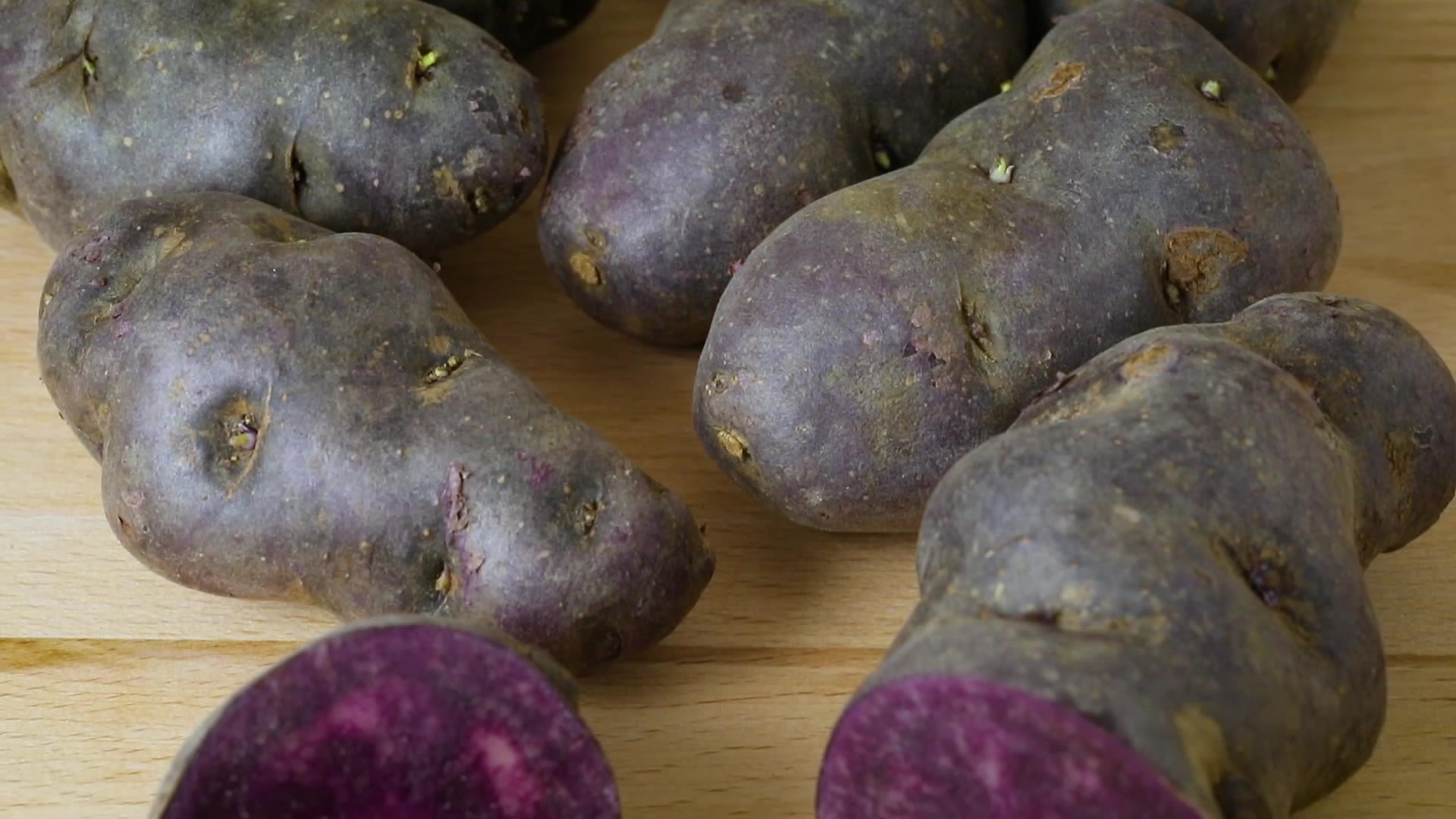Last Updated on April 2, 2025
Planting the Seeds for a Healthier Future
The connection between high quality, nutrient rich food and our overall health and wellbeing has never been in dispute. More than 2,400 years ago, the Greek physician Hippocrates is reported to have said, “Let food be thy medicine and let thy medicine be food.”
Unfortunately, most produce grown today has fewer vitamins and minerals and significantly less nutritional value than it did decades ago. A landmark study published in The Journal of the American College of Nutrition analyzed 43 different vegetables and found that important nutrients are nearly 40% lower than they were in the middle of the 20th century.
The decline in nutrients is attributed to several factors including an industry-wide focus on increasing crop yields through higher plant density and the use of genetically modified organisms, petrochemical fertilizers, herbicides, and fungicides.
Crop yields have more than tripled since the mid-1950s, but at what cost? Higher plant density (more crops planted in the same area) depletes soil nutrients, weakens root growth, and inhibits a plant’s ability to absorb nutrients. Since farmers are paid for the weight of their crops and not the nutrient value, the incentive is to deliver quantity and not quality.
Major distribution inefficiencies also contribute to nutrient decline. “Fresh” produce that we eat daily in the United States has traveled, on average, 1,500 miles to get to our plate. Lettuce is a prime example. Over 90% of all lettuce consumed in the U.S. comes from California. Getting it to consumers on the east coast can take weeks, resulting in the loss of up to 80% of its nutrients, much of its flavor, and a dramatic reduction in its shelf life.
Transporting food long distances also requires a large amount of fossil fuels and results in high levels of greenhouse gas emissions. A comprehensive study published in the journal Nature Food estimates that “food miles,” the distance food travels from farm to plate, are responsible for about 6% of the world’s total greenhouse gas emissions.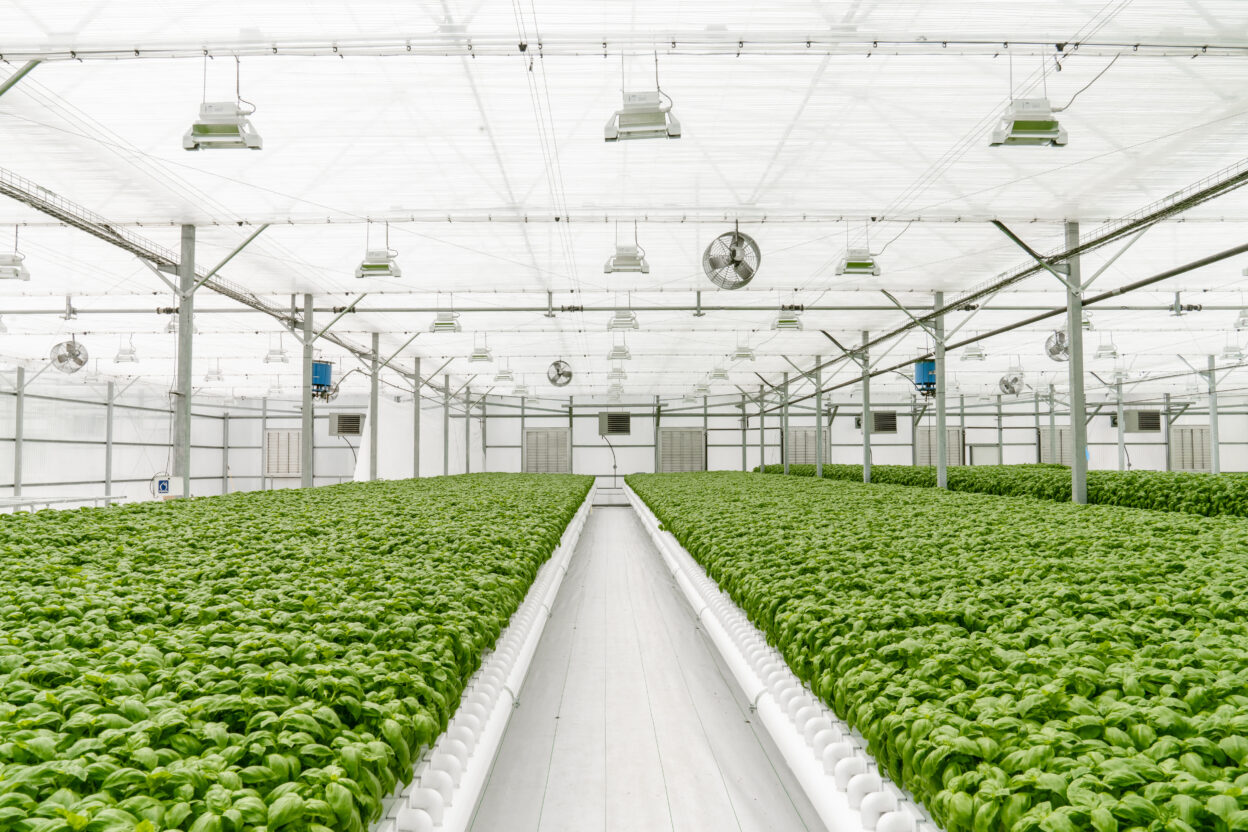
The Villages, Florida, well- known for not just responding to the changing needs and desires of its residents, but for actively anticipating them, has undertaken a bold, audacious mission to create a hyper-local food system that grows and distributes nutrient dense, flavorful, produce from farm-to-table in 24 to 48 hours.
The initiative, called The Villages Grown, is unlike traditional agriculture that is climate dependent. The Villages Grown is an indoor farm with cutting-edge technology and proprietary methodology in what’s known as controlled environment agriculture (CEA).
“We have the ability to manipulate the environment in each greenhouse to provide the crops exactly what they need,” says executive director Drew Craven. “We deliver the proper nutrients, temperature, humidity, light, and air, tailored to each crop.” This level of control is achieved dynamically and automatically by an artificial intelligence system programmed to react to changing conditions by activating shade screens, wet walls, heat extracting fans, and more.
The Villages Grown also utilizes NFT, or nutrient film technique, a highly efficient system in which essential nutrients are dissolved in water and passed through a channel beneath the crops. “This solution continuously recirculates across the roots of each plant and is constantly monitored and balanced for nutrients,” says Craven. “So, we’re always delivering to our crops exactly what they need at any given time.”
The result is fast-growing, nutrient-dense produce and high, consistent yields. “If we plant one thousand heads of lettuce, we usually harvest one thousand heads,” says Brent Shackelford, production manager. “Outdoors, there can be 30% loss and more. We also use 10 to 12 times less water and nutrients than traditional agriculture because there’s no leaching or big storms for any runoff.”
“The Villages has made a significant investment in this greenhouse, and we want to make sure that every square inch of it is being utilized to grow fantastic produce,” says Craven. “We’re going throughabuild-outphaserightnow and by the time we finish this build- out, we’ll be producing over a hundred thousand heads of lettuce, over 8,000 pounds of herbs, over 8,000 pounds of microgreens, and over 2000 pounds of tomatoes each and every week. Over the course of the next year or two, we’ll continue to focus on those varieties and make sure that we’ve got them locked down to a science. From there, we can start expanding into more crops. I’ve joked with my team, the 10-year vision is if it doesn’t fly, walk, or swim, it’s going to come from us.”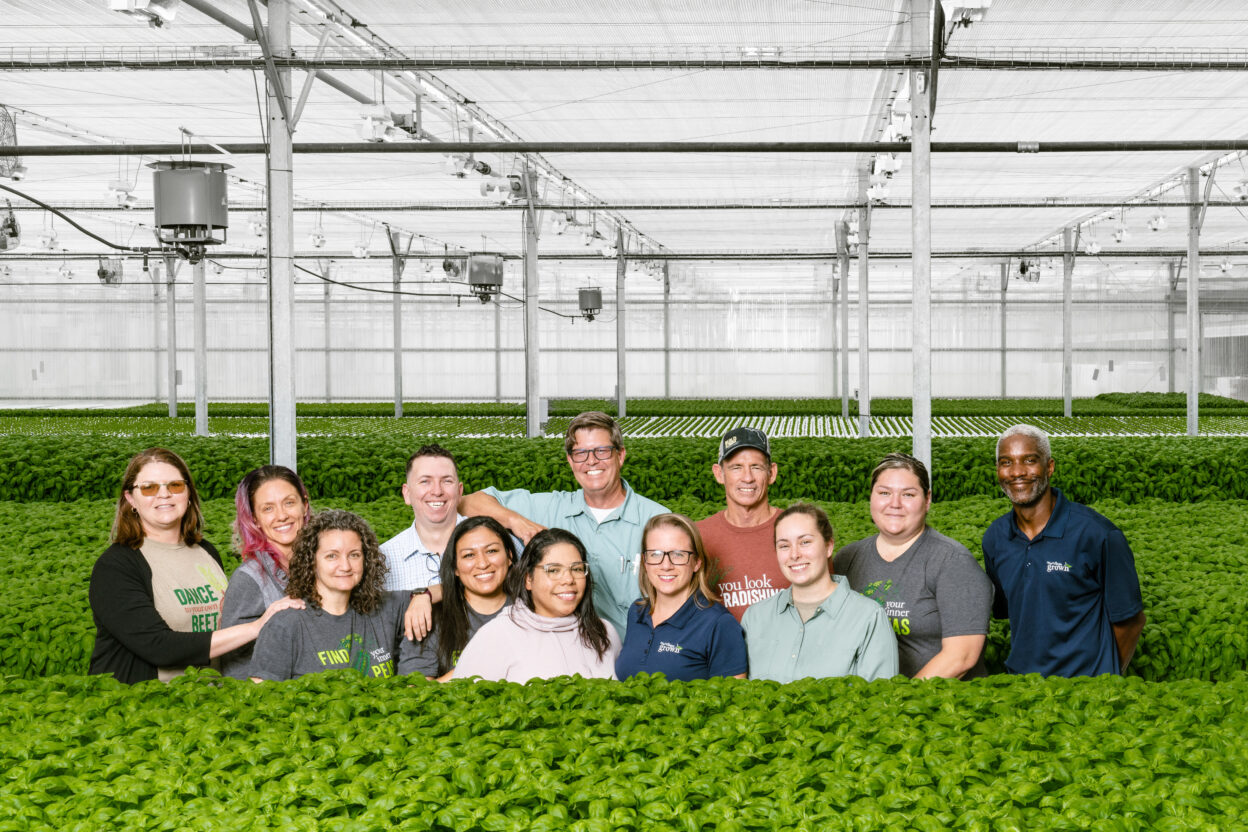
Microgreens, the phase in a plant’s lifecycle after a sprout, are a featured crop. “Microgreens are delicious and they’re a nutritional powerhouse,” says Craven. “One bowl of broccoli microgreens has as many nutrients as 40 bowls of cooked broccoli. And they’re rich in Sulforaphane, a naturally occurring phytochemical that’s a proven and powerful cancer fighter. So, it changes the way that we think about and consume food.”
The Villages Grown is not just growing healthier produce, they’re growing better tasting produce. “Once you try the product, you know why we’re doing this,” says technical grower,Rachael Skiles.“I remember the first time I tried the tomatoes,” says Nashaly Mercado, a Villages Grown farmer.“I said, ‘Wow, that is really different.’ And it’s not only the tomatoes. I taste the difference in the lettuces and the herbs, in everything we grow.”
Consumers agree. “Fresh. Fresh. Fresh,” says Gary Steinbach. “There is so much difference in the taste of the tomatoes, it isn’t funny. And the lettuce! It’s nice, clean, and crisp.” “We went to another store that we won’t mention,” says Linda Neff. “And you take the tomato home and within a day and a half, it’s already starting to decay. And the taste – there is no comparison.”
Construction on The Villages Grown began in 2019 and word quietly spread about its ambitious mission to build a true local farm and food system to contribute to the health and wellness goals of its residents. “I went into nursing to help teach health and wellness,” says Tracy Herrera, senior manager of retail and wholesale. “I found that the big component that so many people were missing was nutrition. When I found out what The Villages Grown was doing, I left my job teaching nursing and came here because of the difference that we can make in somebody’s life. Chronic illnesses can be turned around with proper nutrition and a healthy active lifestyle. And that’s what I want to get behind.”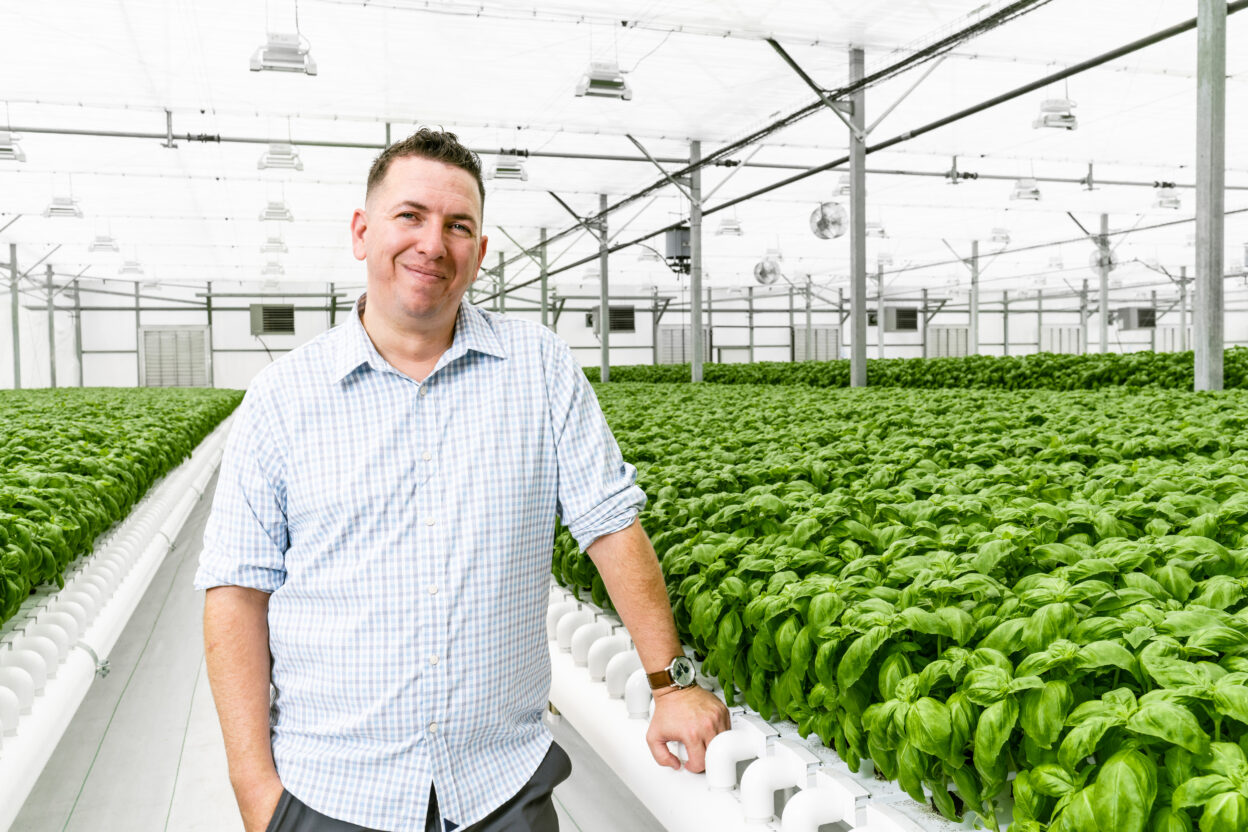
Herrera wasn’t alone — a team of mission driven individuals have been drawn to the project. “The Villages’ culture is one of responsibility and stewardship,” says Craven. “We’ve got great people with a unified vision of providing something amazing and unique for our residents.”
The farm was semi-operational by the summer of 2020. Retail sales began in a modified airstream trailer and grew into a small retail space before opening a flagship store that offers high-quality vegetables, microgreens, herbs, tomatoes and other products from The Villages Grown Local Farm & Artisan Network. The network is a partnership designed to support local farmers and artisans while supplementing The Villages Grown harvest. “They’re helping small businesses,” says Jake Mitchem, a local honey producer. “It’s really refreshing to see and it’s valuable to the consumer.”
In addition to its own retail operation, The Villages Grown produce and microgreens are available in a growing list of retailers inside The Villages, including Publix, Winn Dixie, and Sprouts, and at local farm-to-table restaurant partners. They’re also distributed to local universities, hospitals, and assisted living facilities. “Outside of The Villages, we’re in the Orlando and Tampa markets through our partners with Fresh Point, and throughout the state of Florida via Kroger home delivery,” says Rebecca Reis-Miller, director of business development and distribution.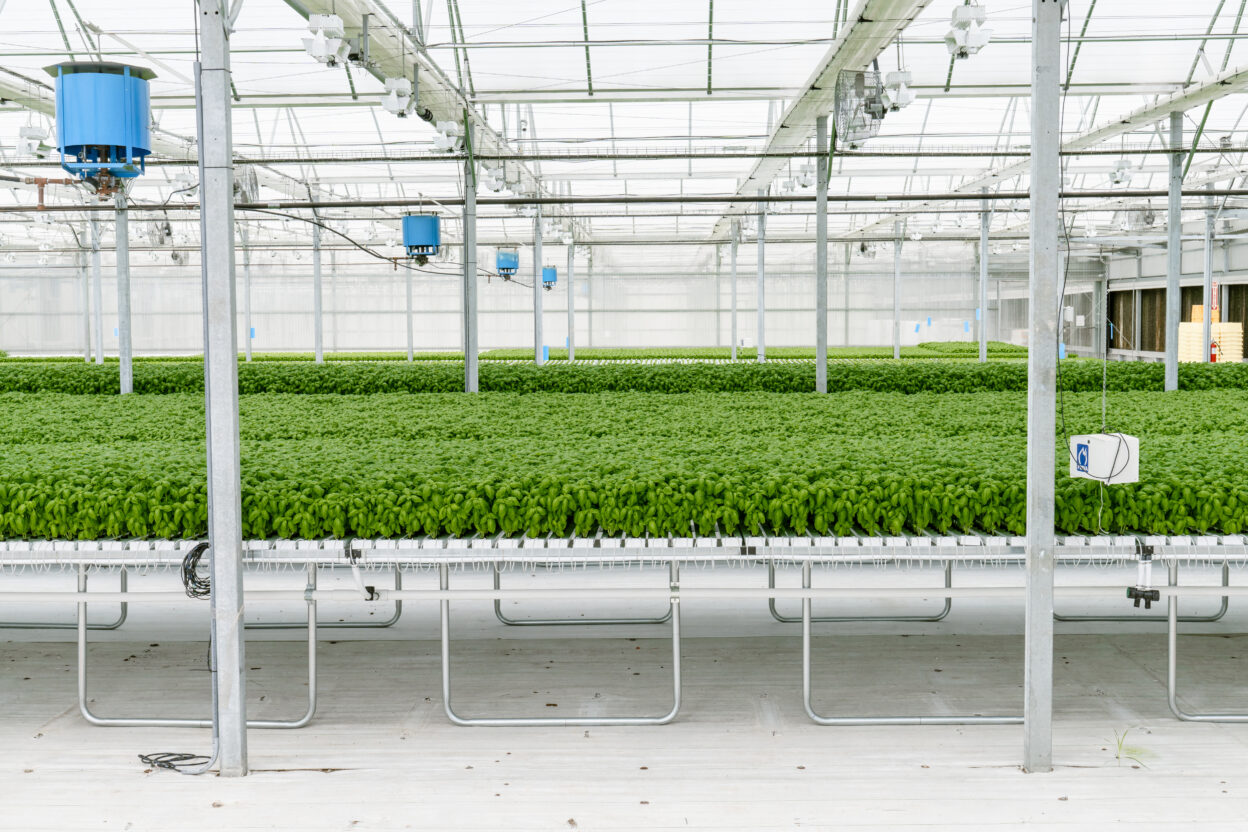
It’s not lost on anyone at The Villages Grown that what they’re doing is important, if not unprecedented. “Everyone is invested in the mission,” says Skiles. “There is joy here every day. The team looks at this facility like it’s their home and they take care of it in that way. It takes that kind of focus to actually turn out a good-looking crop.” “We love, respect, and care about each other,” adds farmer Anna Maria Blackshire. “That shows in what we grow and extends to the community that we are growing it for.”
“What we’re doing demonstrates The Villages’ deep level of commitment to helping residents live their happiest and healthiest life,” says Craven. Brandon Ness, facilities manager agrees. “This is a stepping stone. The Villages said, ‘We would like to provide better nutrition to our Villagers and we’re going to make a significant commitment to making that a reality. We’re going to put it out there and see if it can work.’ We’re proving that this’ll work in a big way.”
The Villages Grown is proving that it’s possible to deliver high-quality, nutrient-dense produce, farm-to-table, in days, if not hours. While the vision is hyper-local for now, they’re building a community-based model for sustainable wellness that’s a blueprint for the local food system of the future. “I’d say The Villages Grown is the future of food,” says Rebecca Reis-Miller, director of business development.
Long known as America’s Friendliest Hometown, The Villages is also committed to becoming America’s Healthiest Hometown and the ability to grow fresh, flavorful, non- GMO, herbicide and pesticide-free produce at scale and get it from farm-to-table in 24-48 hours is an unprecedented step in that direction.
This article is featured in the Fall 2023 issue of The Growing Bolder Digital Digest.



